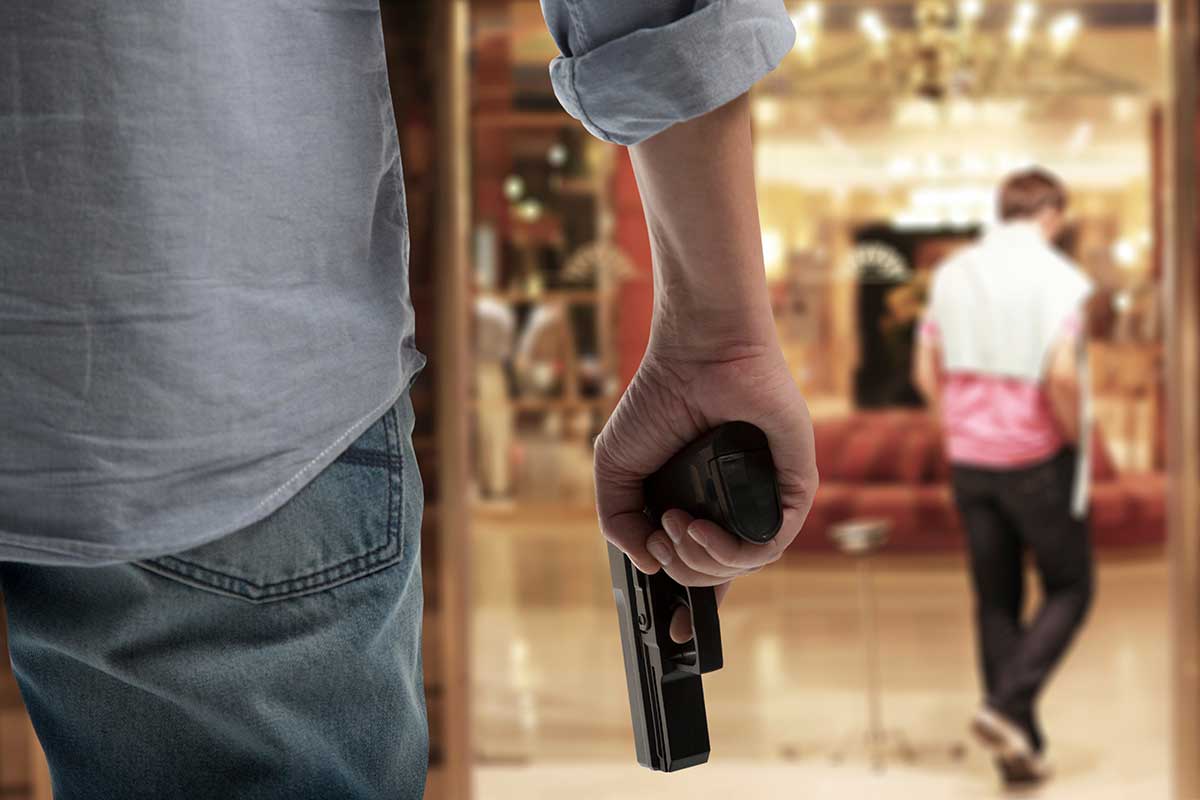
AC050322-Incident-Control
Recent events have proven that bad things can, and do, happen to good people. An increase in crime, including home invasions, attacks on vehicles, and other violent physical assaults, are not part of some fiction novel. Properties have been destroyed, and businesses are looted then burnt to the ground in recorded incidents of uncontrollable civil unrest.
The definition of an incident is an undesirable event. Incidents can vary widely in severity, ranging from civil unrest to a home invasion to an active shooter and everything in between. An incident is resolved when you have relocated to safety or made your environment safe.
Incident control is the process of observation, planning, and immediately responding to an unplanned and undesired event to maintain personal security under duress. What fundamentals of the incident control process can you add to your tool kit to take control of an undesired event? Observation, planning, and response.
OBSERVATION
Any incident, regardless of severity, has a starting point. The predators, terrorists, criminals, opportunists, etc. (aka bad guys) are the ones who determine when and where they will perpetuate an incident and who will be harmed in the process. They have both the initiative and, should they continue with their nefarious activities undetected, possess the element of surprise.
You are, by default, moved to the back of the action-reaction power curve at the start of an incident. You can choose to stay behind or move to the front of the curve.
Forewarned is forearmed. The sooner you can hear, see, or smell it coming, the sooner you can take control and move toward the front of the curve by applying your situational awareness and taking visual control.
To make effective decisions, we humans need to process relevant information. The only way to receive this information is to calmly observe. Why calmly? Tension is the enemy of performance. An incident already generates enough kinetic and emotional energy – there’s certainly no need to add more – especially your own.
Calmly observe people, their movements, body language, and what is in their hands. Listen for distinct changes in ambient audio. Do not just place your eyeballs on objects and people. Visually controlling your surroundings is being mentally engaged with your immediate environment. Mental engagement allows you to receive relevant information that can be effectively processed.
What exactly is going on? Who’s doing what? Did you just identify an incident beginning to unfold? Good decisions are created by processing good information. The more relevant your visual and audio data and their mental registration, the more effective your decisions.
PLANNING
Does the incident warrant a tactical solution? Do you move yourself and those with you outside the building? Or to an exterior wall? Or does it warrant a shooting solution? What are the pros and cons of each?
Under the duress of exigent circumstances, clarity of thought is your strongest ally, and time (ticking clock) is your worst enemy. Given your limited processing time, your plan must be made with alacrity. General George S. Patton (US Army), referencing emergency planning, is credited with saying, “A good plan violently executed now is better than a perfect plan executed next week.”
If your choice is to move toward an exit, how would you get there? What’s the best plan of action and movement? Is there any cover or concealment along the way? Are there any barriers or restrictions? If so, can they be surmounted? Ad hoc action plans such as “I’m going to kick that chair out of the way to open a path and then drag the kids behind me” can be formulated in a matter of seconds.
Take full advantage of the opportunity to determine a viable course of physical action. You don’t have the time to develop some elaborate scheme. The incident may allow only fractions of a second for you to throw something together based on your observations and processing of relevant information.
RESPONSE
Reactive measures (hard skills) can range from placing copious amounts of space between yourself and an active threat to engaging that active threat with your firearm, weapons of opportunity (throwing a chair at them), or using only your bare hands.
Everything reverts to your last level of training and practice regarding hard skills such as shooting, non-ballistic weapons (edged, impact, improvised), irritants (pepper spray), or even your bare hands. It is said that when the time for performance arrives, the time for preparation is over.
All physical or hard skills are perishable. Being able to perform under pressure is to have a training level high enough that there is still enough remaining skill to solve the tactical problem when it attenuates under pressure. Whether shooting, fist fighting, or edged weapons, you will revert to the lowest level of your training when the time comes. This is why it’s such a good idea to have a few reliable hard skills in your tool kit.
Either you control the incident, or the incident will control you. The three fundamentals of the critical incident control process are observation, planning, and response. Better to have and not need than to need and not have. Knowing how to run an incident control process will help you keep ahead of the proverbial action-reaction power curve should bad things start to happen to good people.














